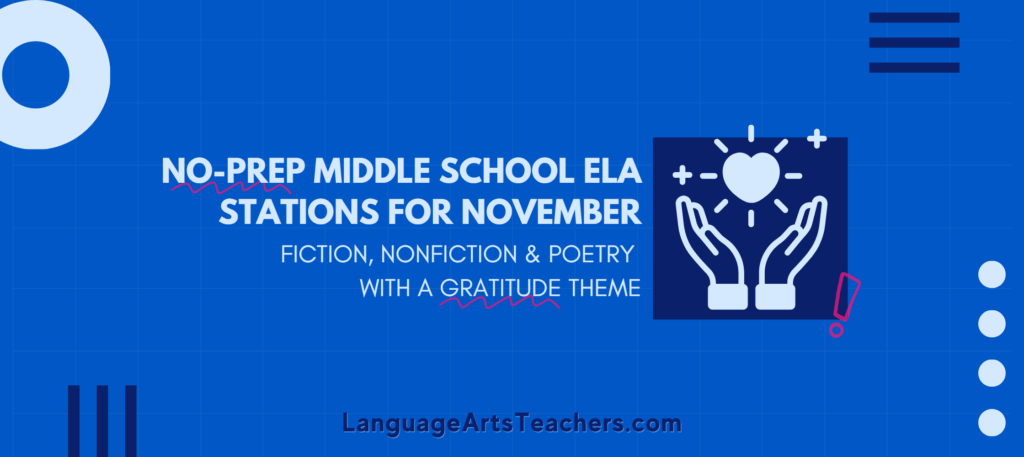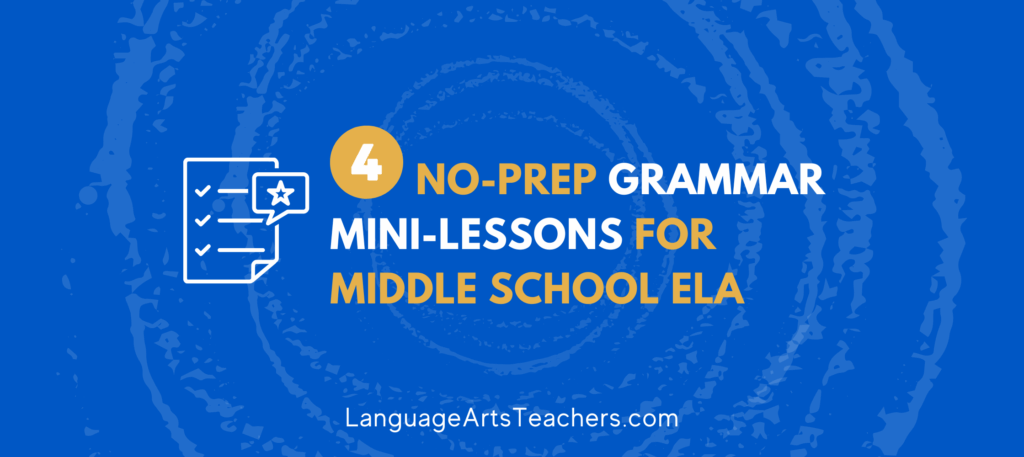If you’re a middle school teacher, classroom management is key to having a successful year. It can be difficult to keep middle schoolers on track, but with the right tips and tricks, it can be done (without stress, begging, or selling your soul)!
The tips, tricks, and timeliness of this topic is merely a snapshot of what we covered during an entire DAY of topics at the MSELA Summit >> The Virtual Conference for Middle School ELA Teachers I host each year. For all the days’ topics, themes, and sessions, head over to www.mselasummit.com.
But for this particular article, I’m just going to share some of the best ways to manage your middle school classroom. I’ll cover everything from building relationships and mutual respect to having clear expectations.
Follow these tips, and you’ll be well on your way to a successful year!
What is classroom management?
Before we get into what the right classroom management looks like, let’s first go over what it is not. That way, we can have a better understanding of what you should be looking for as a middle school teacher.
What classroom management is not:
- It is NOT a strict set of rules
- It is NOT discipline
- It is NOT rewards
- It is NOT punishment
- It is NOT yelling at kids
- It is NOT trying to be the boss
A good analogy would be a restaurant. Your students are like the guests in a restaurant, and the better you can lay out the process, the easier it will be. In the same way that you wouldn’t want to go to a restaurant and not know where to sit, when the server was coming, what was on the menu, etc., students don’t want to come into your classroom not knowing what is expected of them.
The better you can have a system and then clearly explain that system to your students, the smoother everything will go for both students and teacher. This may take some time at the start, but the better you are prepared to explain and teach exactly what you are looking for, the smoother the process will be.

So how will YOU manage your classroom?
Every teacher is different, and every classroom is unique. As a result, there is no single answer to the question of how to best manage a classroom. However, there are some general principles that can be useful for all teachers to keep in mind.
First, it is important to establish clear norms and expectations for students. What are the rules of the classroom? What is expected of students in terms of behavior and effort? Once these norms have been established, it is also important to ensure that all students are aware of them.
Additionally, teachers should take care to model the desired behavior themselves. If you want your students to be respectful and engaged, then you need to show them what that looks like.
Finally, it is also important to be flexible and adaptable. No matter how well you plan, there will always be days when things don’t go according to plan. When this happens, it is important to be able to roll with the punches and adjust your approach as needed.
The bottom line is that there is no one-size-fits-all answer to the question of how to manage a classroom. However, by keeping these general principles in mind, you can develop your own effective approach.
Where to start with your classroom management
Mutual respect between teacher and student
One of the most important things to establish in your classroom is mutual respect between you and your students. This means that you must respect them as individuals with their own needs, interests, and backgrounds.
In turn, they will be more likely to respect you as an authority figure and adhere to the management of your classroom. There are many ways to show respect for your students. For example, you can learn their names and use them often, avoid making negative comments about them in front of others, and give them a chance to share their opinions and ideas.
By establishing a climate of mutual respect, you will go a long way towards making your classroom a happy and productive learning environment.
Clear expectations of your students
When it comes to learning, having clear expectations is key. When students know what is expected of them, they are more likely to be successful. For example, if a teacher tells students how to enter the classroom, ask a question, request a bathroom break, etc., they will know what is expected of them.
However, if the same teacher does not set any expectations in these areas, the students may not do what you expect of them. In addition, students who know what is expected of them are more likely to take ownership of their behavior. They will be more likely to go with the flow of the classroom rather than cause problems. As a result, clear expectations are essential for classroom management.
Have a plan in place when expectations aren’t met
What are you going to put into place for different situations? Even something as simple as a student walking into the room and pushing through, rather than being patient and waiting, needs a response. It could be having the student go back out and enter again or whatever you deem best.
It is critical, though, that you already have an idea of your response to any situation that may come up in your classroom. The more you can game plan before something happens, the easier it will be for you to deal with any issues that arise.
Use signage to help better explain to your students what is expected of them
By posting signs with expectations, you can help your students understand what is expected of them from the moment they walk into the room. But it’s not enough to just hang a sign in the corner of the room – you need to go over each point with your students.
Explain what each rule means and why it’s important. You can even turn it into a writing assignment, where each student has to explain why following a particular procedure is important (just a little “how-to” paragraph followed by “what would happen if” is all it takes). By taking the time to discuss, write, and talk about routines and expectations, you can ensure that your classroom runs smoothly all year long. My best tip here is that it’s definitely NOT something you can just talk about once in September and be done. This is something that becomes part of your everyday conversation throughout the year. It’s not a punishment, and it’s not you being a broken record. It’s simply you and your students talking through and acting out the routines, procedures, and expectations on a regular basis.
Take time to build relationships with your students
“No one cares about how much you know until they know how much you care?”
If you want your students to buy into your teaching and your classroom management style, they need to know that you care about them. This means that you need to take the time to build and develop relationships with your students.
That means:
- Learning your student’s names
- Talking to ALL your students (have a plan to do this)
- Smiling and engaging when you can
Get your students invested
One of the best ways to get your students invested in classroom management style is to have them write out what they feel should be expected of them. This can be done as a class exercise, or you can have each student do it individually.
Either way, it will give them a chance to think about what they need to do to be successful in your classroom. It also shows them that you value their input and want them to be a part of the decision-making process. Furthermore, it gives you some insight into what they are thinking and feeling about your style of classroom management.
As a result, this is an exercise that is well worth doing with your students.
Lead by example and show respect
One of the most important things you can do as a teacher is to lead by example. If you want your students to be respectful, you need to show them what that looks like in real life.
Model the behavior you want to see from them. Treat your colleagues and school staff with respect. Be patient and kind, even when things are tough. And if you ever make a mistake, apologize and show that you’re working to be more respectful.
By setting the right example, you can help your students learn how to be respectful members of the school community.
Middle School Classroom Management Conclusion
Classroom management is an essential part of middle school teaching. By following these tips, you can set your students up for success in your classroom. With the proper classroom management, you can remove all the unnecessary issues and allow your students to learn in a happy and healthy environment, which is what school is all about.
Do you have any other tips to add? Share them in the comments below! And if you’re a middle school ELA teacher, what are some of your favorite classroom management go-to’s? I’d love to hear from you!




